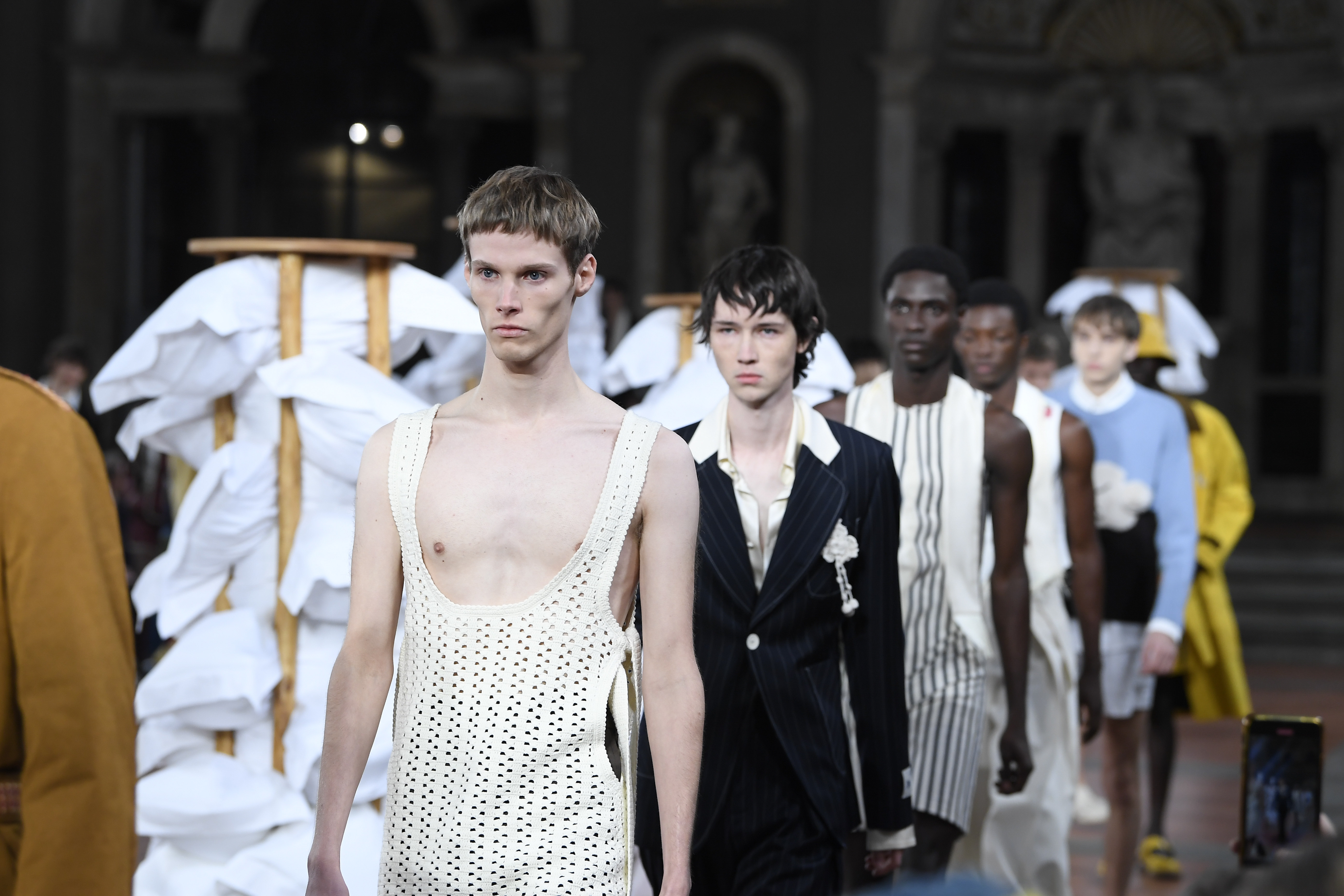
Two enormous ticking clocks hung at the entranceway of the Fortezza de Basso, the 16th-century fort in Florence which hosts the twice-yearly menswear fair Pitti Uomo. If ‘time’ was the official theme of this year’s edition – elsewhere in the fair digital clocks whirred with numbers, counting down and then back up again, as if glitching – a consideration of temporality seemed to also infuse the diverse selection of designers and brands on show, whether inside the Fortezza or in venues across the city.
Florence, of course, provides the perfect backdrop for an exploration of the passing of time. You can turn the corner, or pass through a doorway, and feel like you are moving through centuries; as a colleague noted on the first evening, having ascended a sweeping stone staircase into the ornate 17th-century Palazzo Corsini on the River Arno, it was almost overwhelming to think that people had been occupying these hallways for hundreds of years, and we were simply one of the thousands to walk alongside its gently worn stone floors (the occasion was a fittingly dramatic candlelit feast held by Italian designer Brunello Cucinelli, the unofficial opening of the fair).
Pitti Uomo 105: everything you need to know
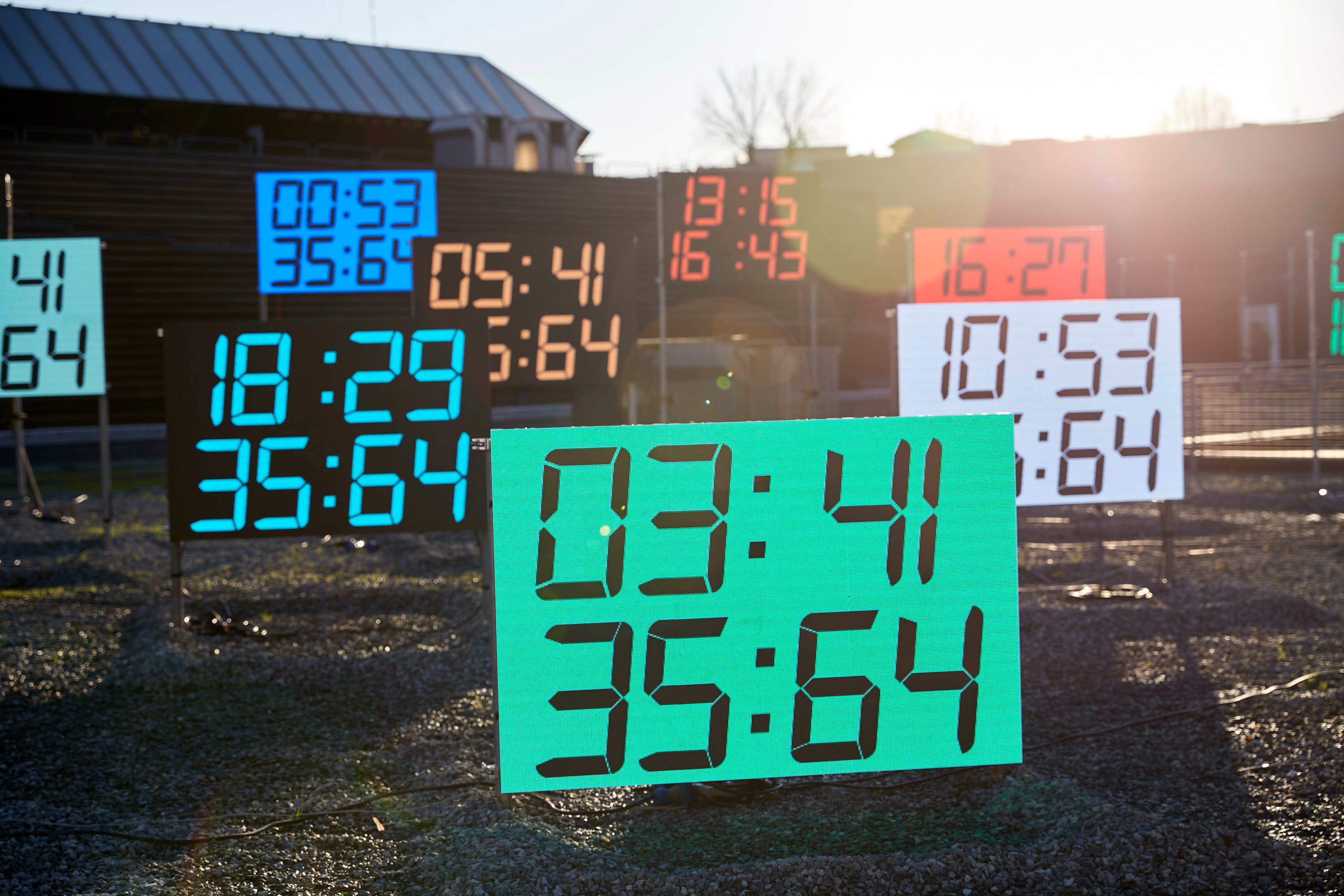
The ticking clocks inside the fair itself, which is held at Fortezza de Basso
British designer Steven Stokey-Daley of eponymous label SS Daley – one of this season’s guest designers at the fair – selected the Salone dei Cinquecento in the Palazzo Vecchio to show his A/W 2024 collection, the vast, ornate hall constructed in 1494 as a seat for the great council of the city’s spiritual leader Savonarola. The designer – whose work often looks to the past in order to explore the British class system – began with a 1911 EM Forster short story, A Story of A Panic. In it, a group of British tourists experience the onset of a strange, inexplicable horror, despite the picturesque surroundings of the Italian village in which they find themselves. Like Stokey-Daley’s work, it explores themes of social mobility and class – here set amid the fast-changing social mores of the turn of the century – but also in its undercurrent of queer sexuality through its flighty protagonist Eustace.
Stokey-Daley said that the collection attempted to capture a feeling of lightness, the feeling of escaping oppressive British institutions. The first look did so literally: the model walked in a tailored jacket and white shirt, trousers entirely removed. Other looks saw models cloaked in enormous knitted ponchos, which the designer said came from the idea of tapestries he encountered on research trips to Florence; he imagined his own protagonist waking up in bed and grasping the blanket to wrap around himself as he wandered the hallways. Other pieces riffed on the traditional garb of academia, here dishevelled or in the process of being abandoned (whether rugby-style shirts or formal nightgowns). Tailoring was a highlight, which Stokey-Daley said was down to shifting the production to Italy: ’Not only is it a different experience showing here, but making all the samples here and developing the collection here was really an amazing experience for me,’ he said after the show. Like Forster – perhaps best epitomised by his 1908 novel A Room With A View – Stokey-Daley seemed enamoured by the dizzy liberation that being in Florence can bring.
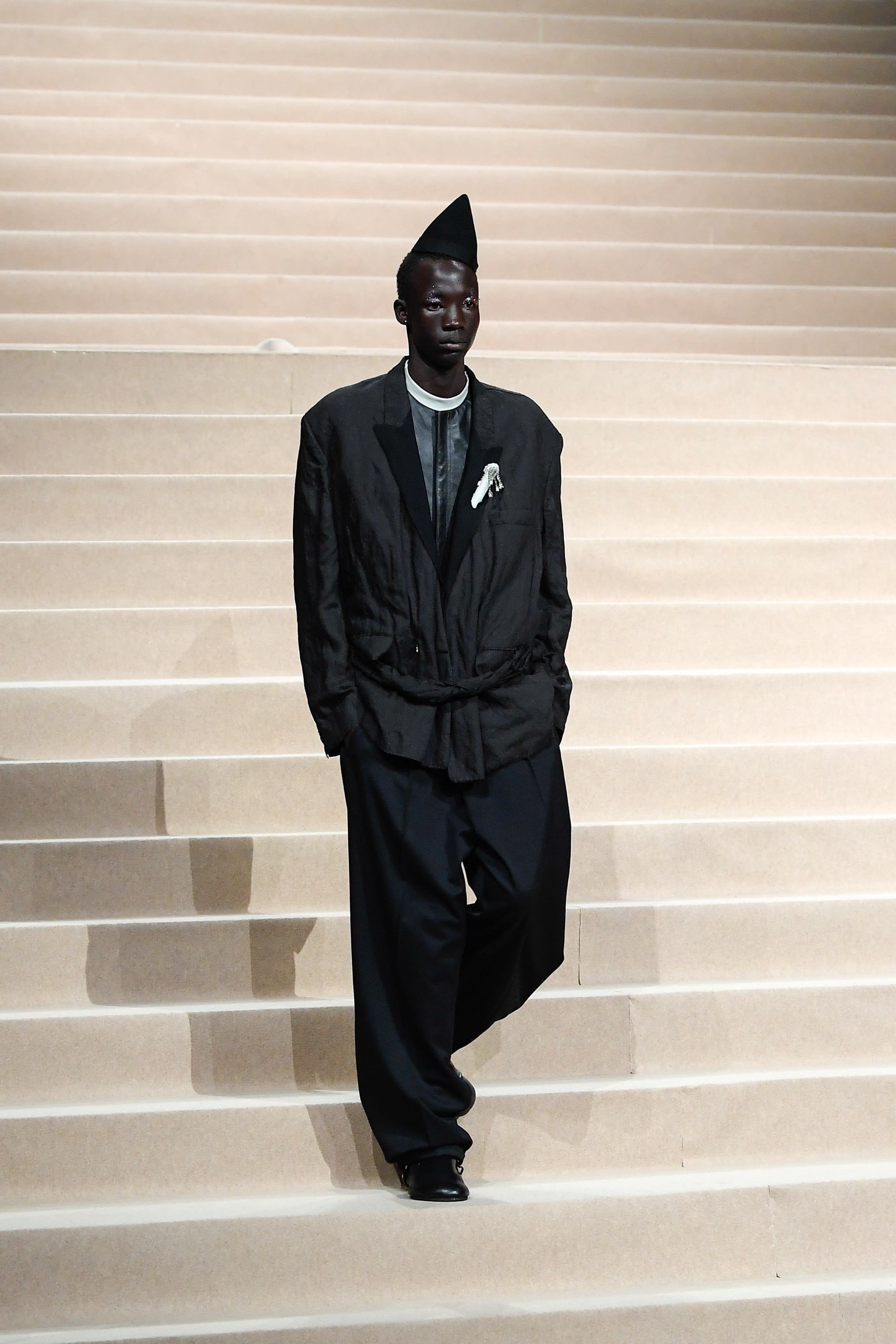
Luca Magliano, the season’s other guest designer, hails from Bologna, where his brand is still based. He chose not the splendour of Renaissance Florence and the city’s panoply of palazzos and piazzas, but the Nelson Mandela Forum, a sports stadium on the outskirts of the city, to present his own A/W 2024 show. There, he erected an enormous staircase down which his models walked before traversing the dimly lit space. His clothes too look to history – the uniforms of the late radical poet Patrizia Bellini were one inspiration – while the impromptu glamour of Bologna’s streets, known for their long history of class protest and radicalism, ran throughout the collection. His knack as a designer is to create pieces that look lifted from time – a sweater with an intarsia cat looked as if it had been discovered folded away in an attic – and yet each piece is cleverly shot through with a frisson of subversion that makes it feel entirely contemporary (tailoring, for example, wrapped and twisted around the body, while shoes were studded with sharp silver spikes).
‘An investigation into the concept of the classic which applies to everything as an absolute rule and yet remains absolutely reversible at the same time,’ he told Scarlett Conlon of the show, noting that the staircase was his own comment on class – ‘a vertical structure that unites top and bottom... a cruel political metaphor’.
At Achilles Ion Gabriel – a Finnish designer who is currently the creative director of Camper shoes, but was here making his debut under his eponymous label – there was a similar mood of dishevellment. Sculpturally crumpled suits levitated away from the body, while lacy slip dresses appeared stained around their hemline. The abandoned grandeur of Stazione Leopolda – first built in 1848, before being transformed into factory space during the Second World War – provided a fitting backdrop, here dressed in pale blue curtains (the fledgling brand’s signature colour). He was at his best, though, when being more playful: brown cow prints, blocky cowboy boots, and colourful shearling-style trims reflected the levity of his designs at Camper.
Receive our daily digest of inspiration, escapism and design stories from around the world direct to your inbox.

Achilles Ion Gabriel A/W 2024
In the fair itself – which felt perhaps the busiest it had been since before the pandemic – Brunello Cucinelli showed his latest collection, which looked back to the 1980s with broad-lapelled oversized outerwear, louche pinstripe tailoring and plenty of shearling (the latter impossibly lightweight), all infused with the designer’s typical sprezzatura. Prints came in moments of paisleys, while ties – which look set to have a resurgence this year – came in a multitude of iterations (largely slim). A new crackled matt leather, meanwhile, was used across the brand’s bags and accessories, and will no doubt age gracefully.
Herno, meanwhile, continued its journey from historic outerwear brand – it was born on the shores of Lake Maggiore in the mid-1950s with innovative castor-oil-treated raincoats – to a more wide-ranging contemporary fashion label. The brand describes it as a ’full look’ approach, attempting to create a comprehensive wardrobe from a multitude of coats and jackets to trousers, knitwear and tailoring, alongside a sleek, sportswear-infused outdoor offering. The collections remain rooted in Herno’s heritage, though, particularly in their use of fabrications; here, these spanned cashmere, cashmere blends and luxurious knitwear, as well as more sporty technical fabrics. The last were used on a featherweight puffer jacket, inspired by an original Herno design from early in the brand’s history. There, it was used as an inner lining; here, it became the perfect jacket for travel (I scrunched it up in my hands and it bounced back without a crease).
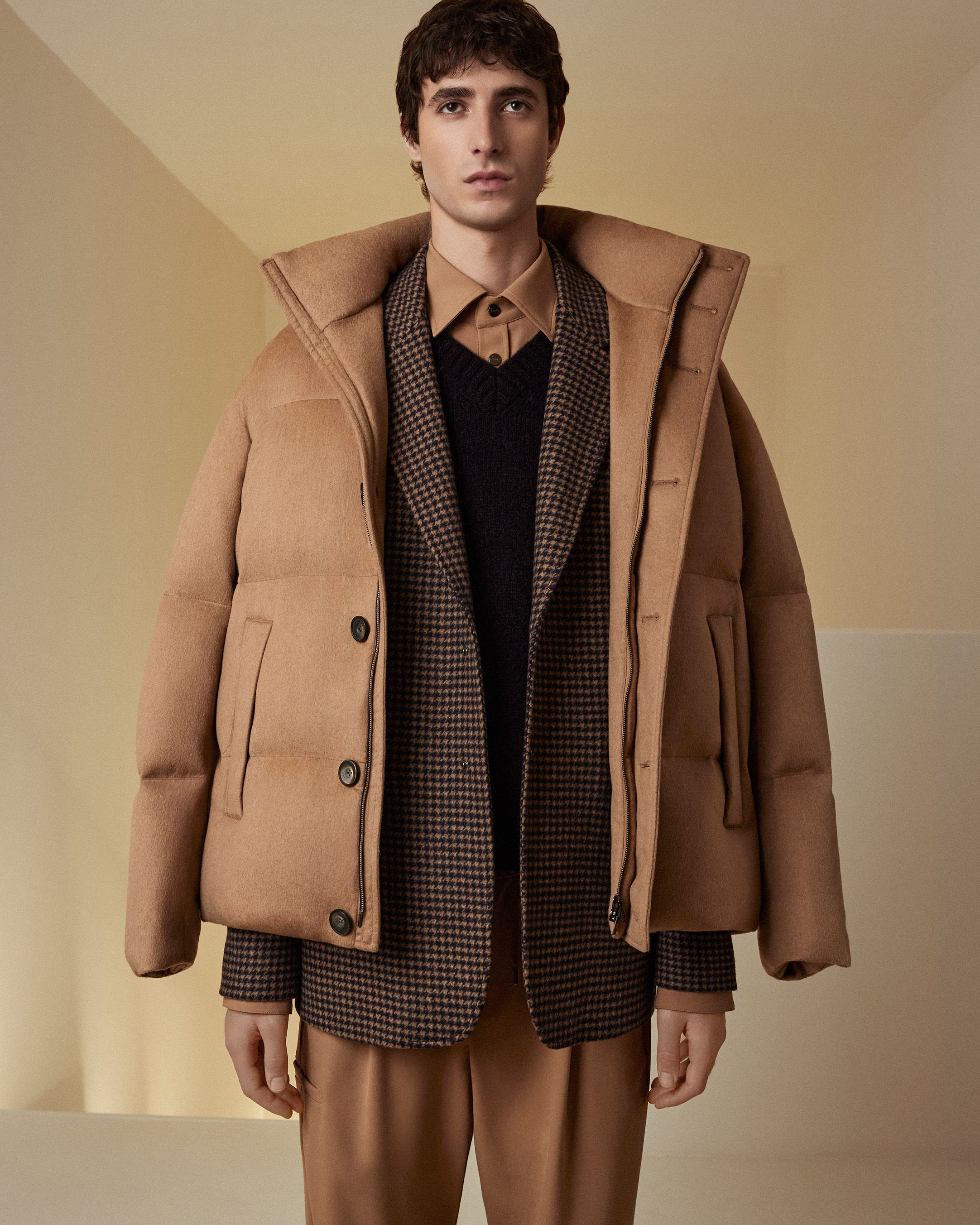
Herno A/W 2024, which focussed on fabric
Despite celebrating 40 years in business this year, denim brand Guess had its eyes squarely set on the future. Taking over the contemporary theatre Teatro del Maggio Musicale Fiorentino, it staged an immersive exhibition that took guests on a whistlestop tour of the brand’s history – which began in a humble fish store in Bandol, south of France – before revealing its latest innovation, ’Guess Airwash’ in an interactive lab. Promising to replace the water- and resource-heavy process of stonewashing – which the brand introduced in 1981, having been seduced by Californian style codes in a trip to America just prior – the Airwash, powered by Jeanologia, uses air and light to replace the traditional pumice stones, while water consumption drops dramatically. In the final product – the difference from the original stonewashed pairs barely perceptible – past, present and future collided.
Jack Moss is the Fashion & Beauty Features Director at Wallpaper*, having joined the team in 2022 as Fashion Features Editor. Previously the digital features editor at AnOther and digital editor at 10 Magazine, he has also contributed to numerous international publications and featured in ‘Dazed: 32 Years Confused: The Covers’, published by Rizzoli. He is particularly interested in the moments when fashion intersects with other creative disciplines – notably art and design – as well as championing a new generation of international talent and reporting from international fashion weeks. Across his career, he has interviewed the fashion industry’s leading figures, including Rick Owens, Pieter Mulier, Jonathan Anderson, Grace Wales Bonner, Christian Lacroix, Kate Moss and Manolo Blahnik.
-
 Explore the work of Jean Prouvé, a rebel advocating architecture for the people
Explore the work of Jean Prouvé, a rebel advocating architecture for the peopleFrench architect Jean Prouvé was an important modernist proponent for prefabrication; we deep dive into his remarkable, innovative designs through our ultimate guide to his work
-
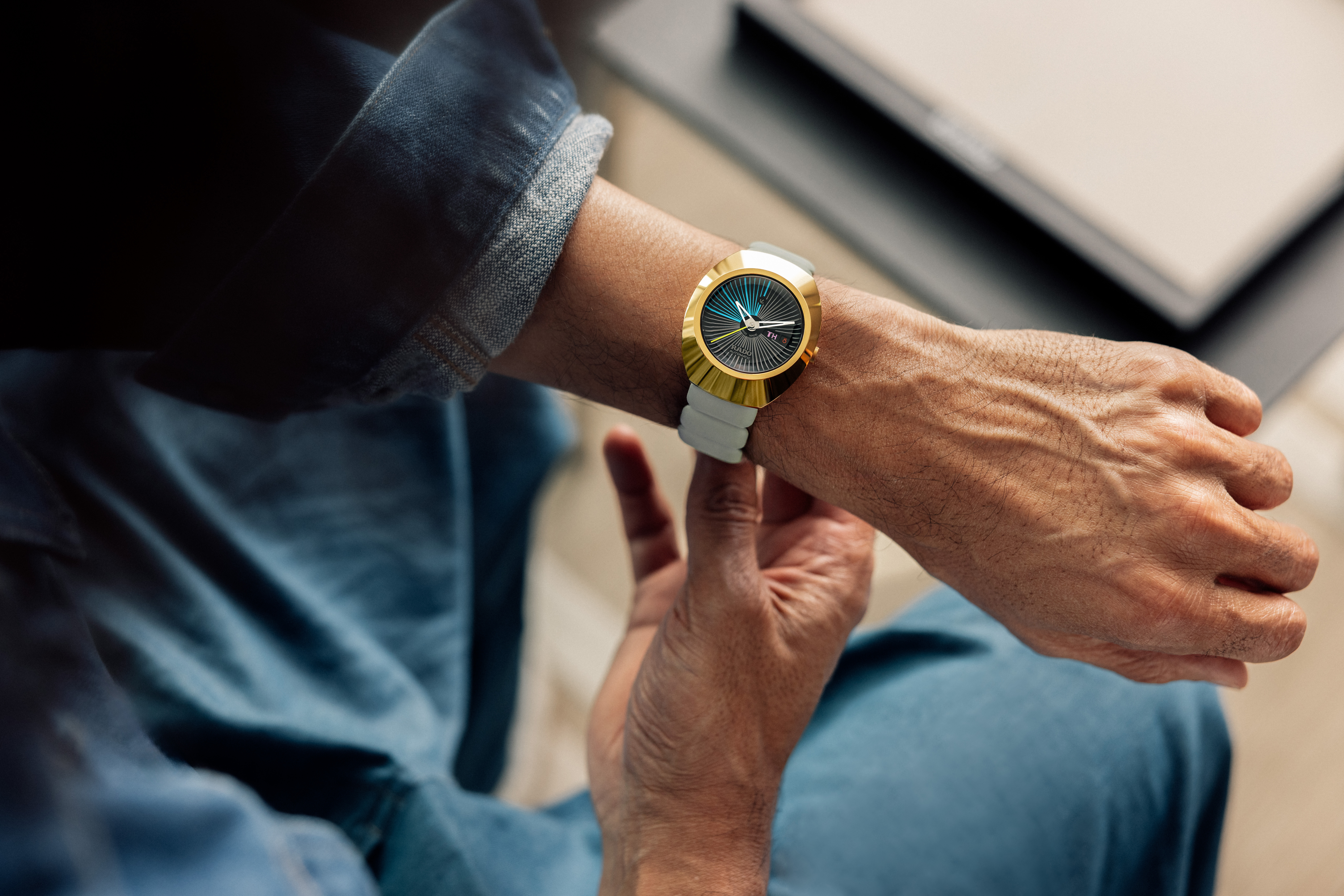 'I wanted to create an object that invited you to interact': Tej Chauhan on his Rado watch design
'I wanted to create an object that invited you to interact': Tej Chauhan on his Rado watch designDiastar Original which Rado first released in 1962 has become synonymous with elegant comfort and effortless display of taste. Tej Chauhan reconsiders its signature silhouette and texture on the intersection of innovation and heritage
-
 High in the Giant Mountains, this new chalet by edit! architects is perfect for snowy sojourns
High in the Giant Mountains, this new chalet by edit! architects is perfect for snowy sojournsIn the Czech Republic, Na Kukačkách is an elegant upgrade of the region's traditional chalet typology
-
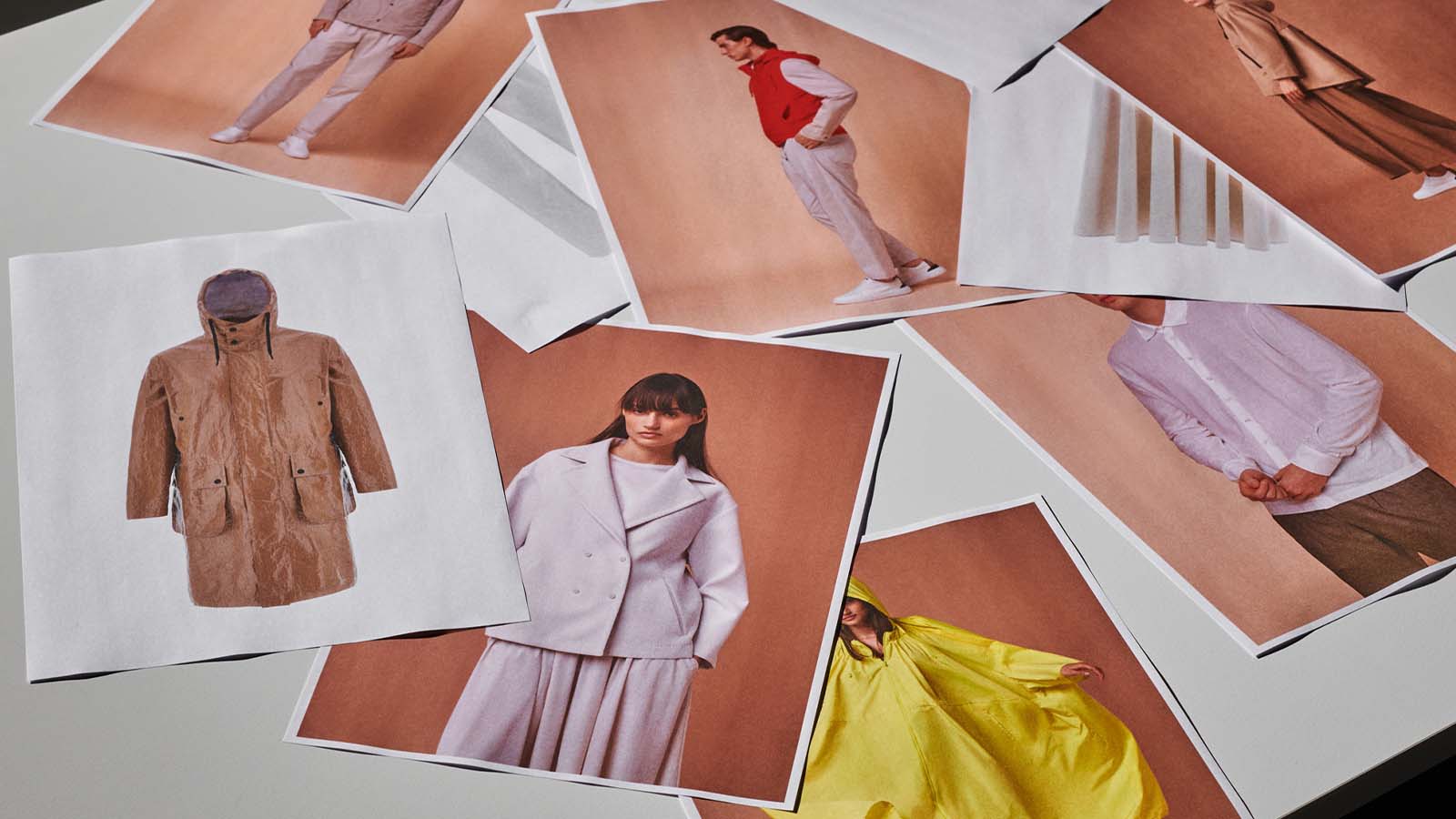 Exploration, travel, adventure: the lowdown on Herno’s S/S 2023 collection
Exploration, travel, adventure: the lowdown on Herno’s S/S 2023 collectionA closer look at Herno’s latest collection, which riffs on the brand’s heritage with a new fashion-focused lens
-
 Herno Globe wins Wallpaper* Design Award for sustainable style
Herno Globe wins Wallpaper* Design Award for sustainable styleThe Herno offshoot is the Italian brand’s most sustainable yet, featuring pioneering low-impact fabrications – the winner of ‘Best Sustainable Style’ at the 2023 Wallpaper* Design Awards
-
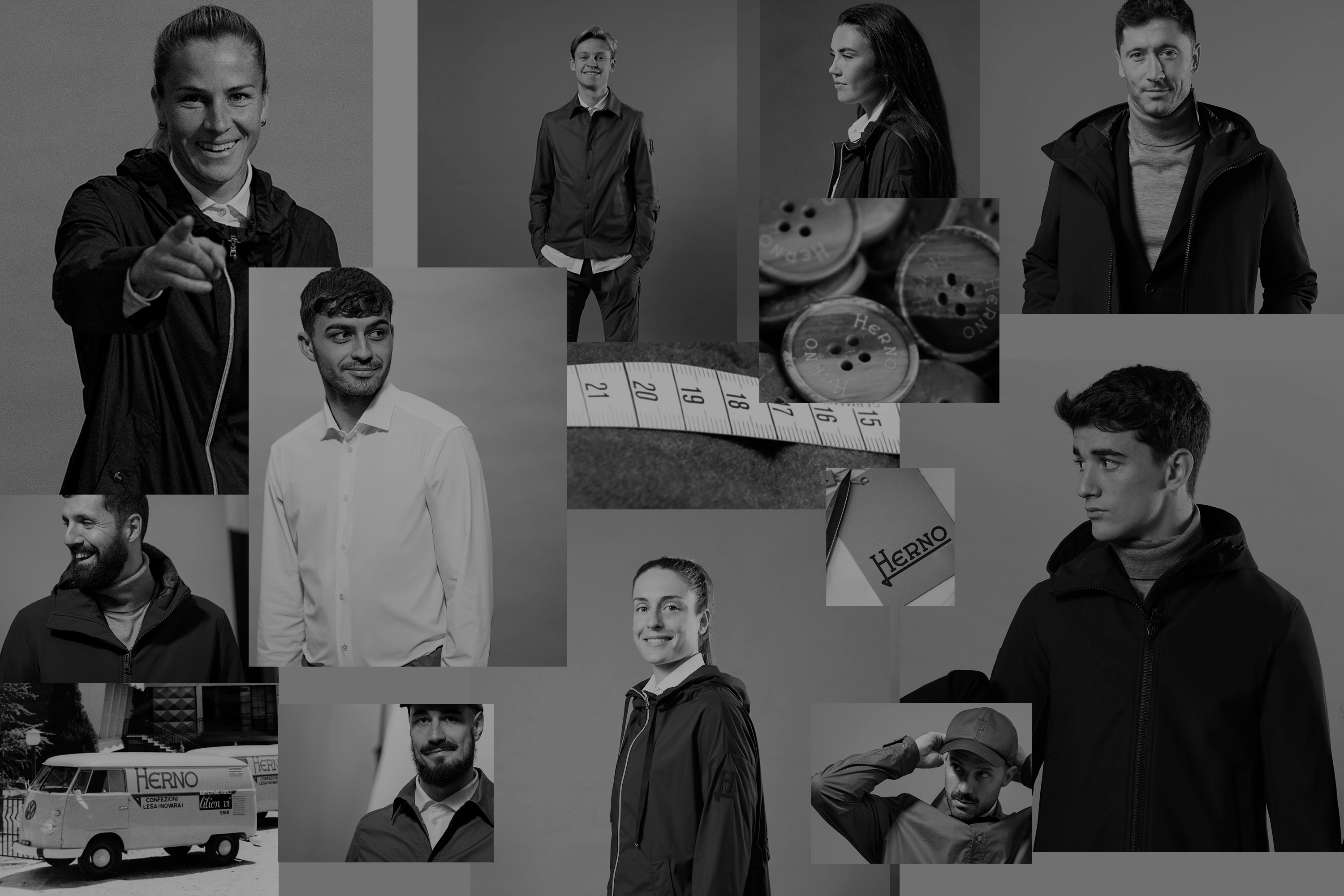 Herno to team up with FC Barcelona on formalwear
Herno to team up with FC Barcelona on formalwearFrom January, Italian heritage label Herno will become FC Barcelona’s official formalwear partner for the next three seasons
-
 These innovative, sustainable fabrics are defining Herno Globe A/W 2022
These innovative, sustainable fabrics are defining Herno Globe A/W 2022Herno Globe is the sustainable offshoot of historic Italian outerwear label Herno. From regenerated nylon to fast-to-degrade materials, discover the fabric innovations defining the brand’s colourful A/W 2022 collection
-
 Exclusive Herno factory tour with CEO Claudio Marenzi
Exclusive Herno factory tour with CEO Claudio MarenziHerno CEO Claudio Marenzi shows us where the magic happens, and talks about the brand’s transformation from raincoat maker to outerwear behemoth
-
 Camping style: how to achieve chic at the highest peak
Camping style: how to achieve chic at the highest peakWith brands including Bally, Stone Island, Herno and Snow Peak bringing utilitarian elegance to outerwear, getting into the great outdoors has never looked so good
-
 Padded value: these puffer jackets have sustainable style
Padded value: these puffer jackets have sustainable styleA host of brands are bringing padded value to outerwear, with puffer jackets formed from natural materials and upcycled fabrics
-
 Technical expert Herno's trail-ready trainer
Technical expert Herno's trail-ready trainerTest out tricky terrains now